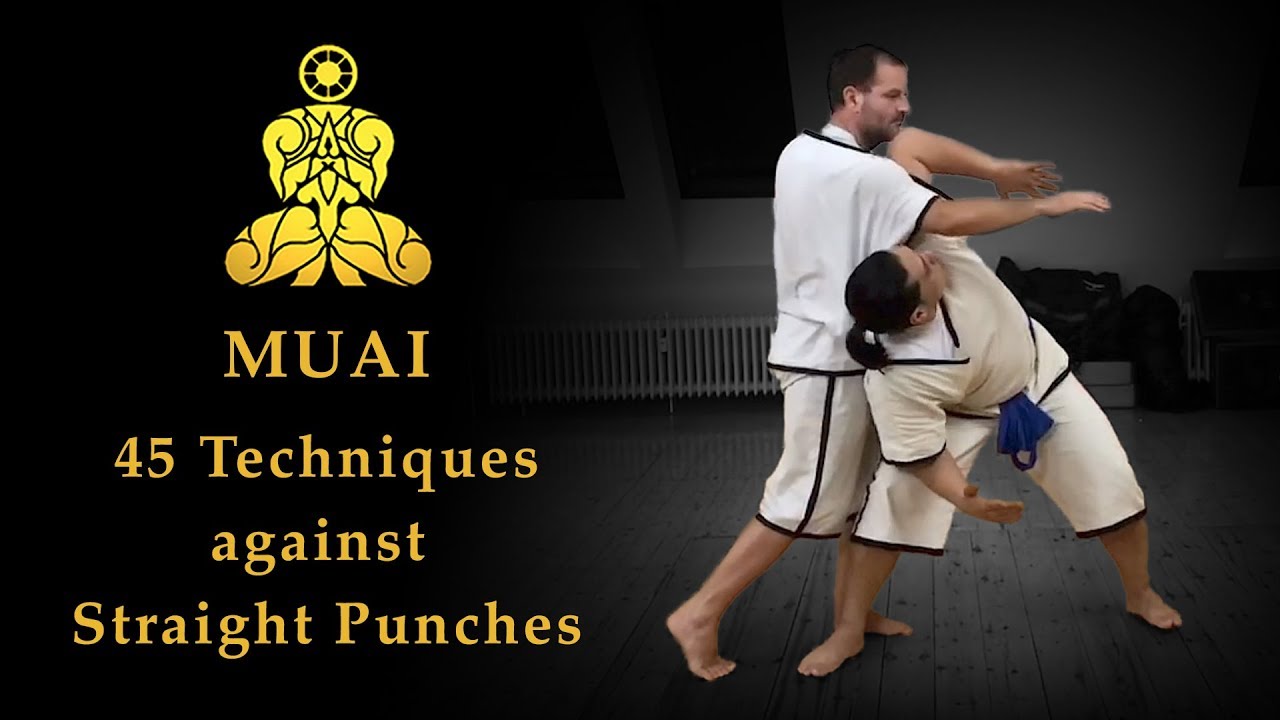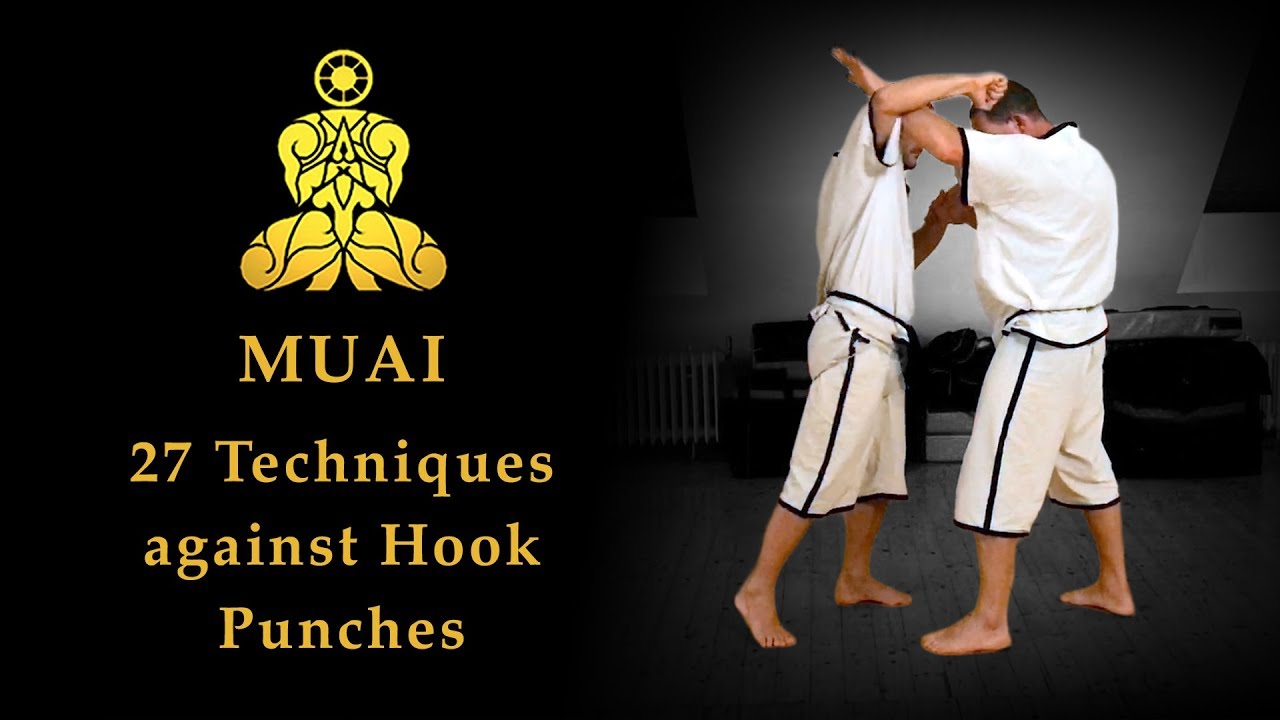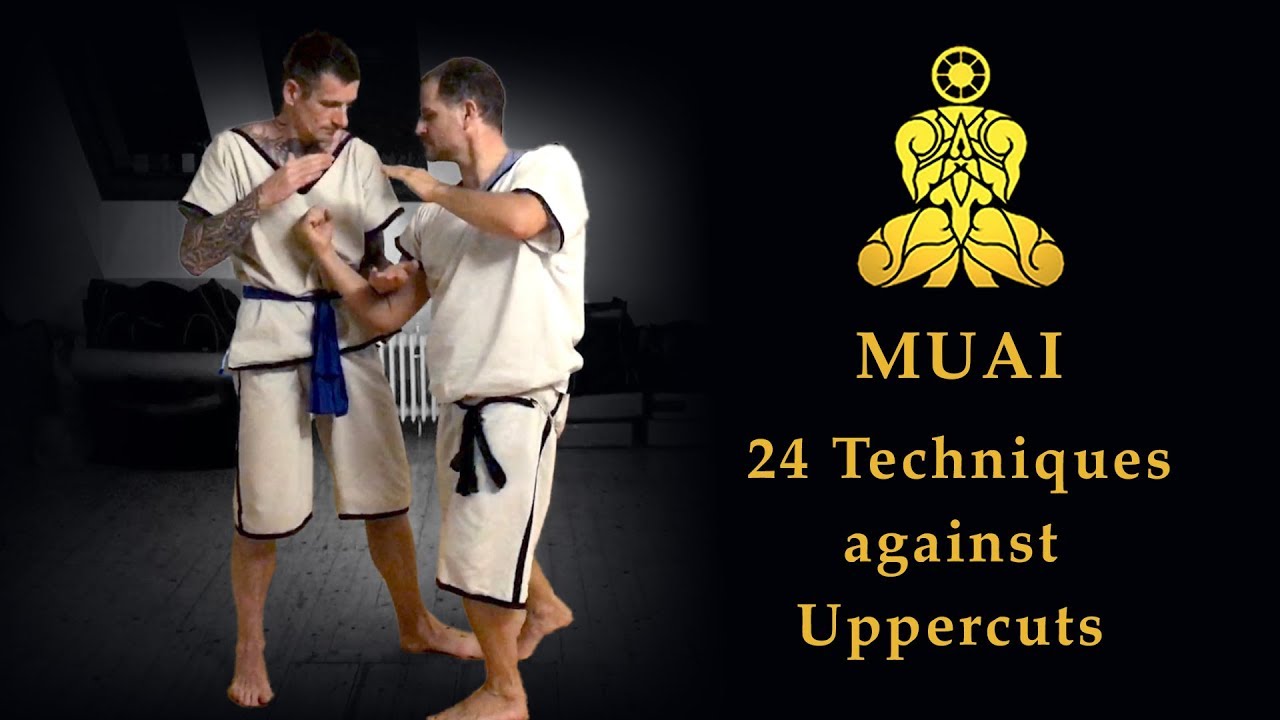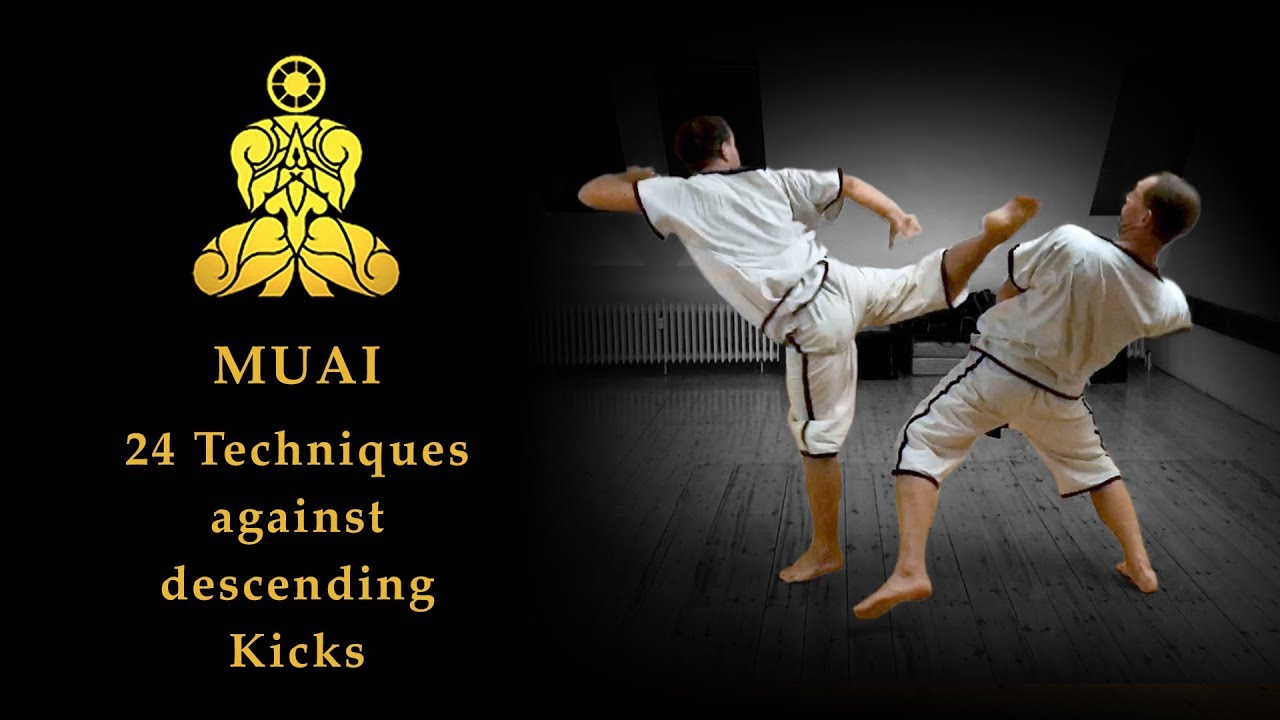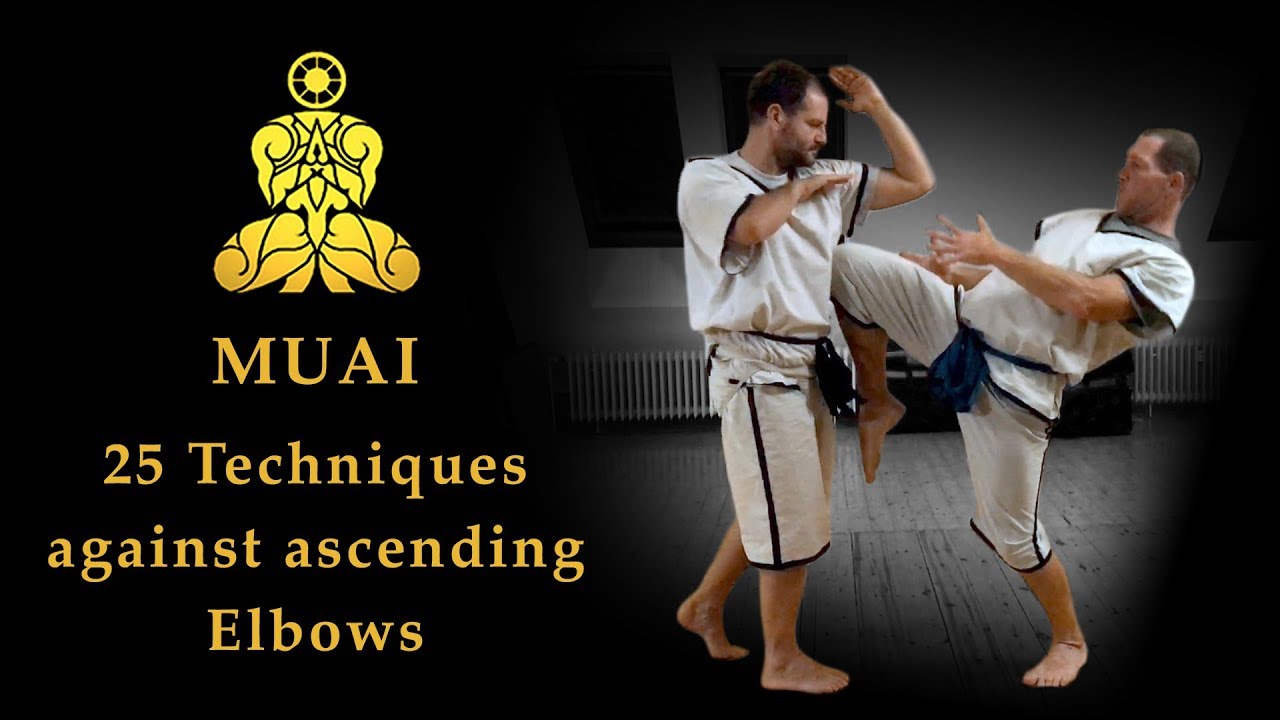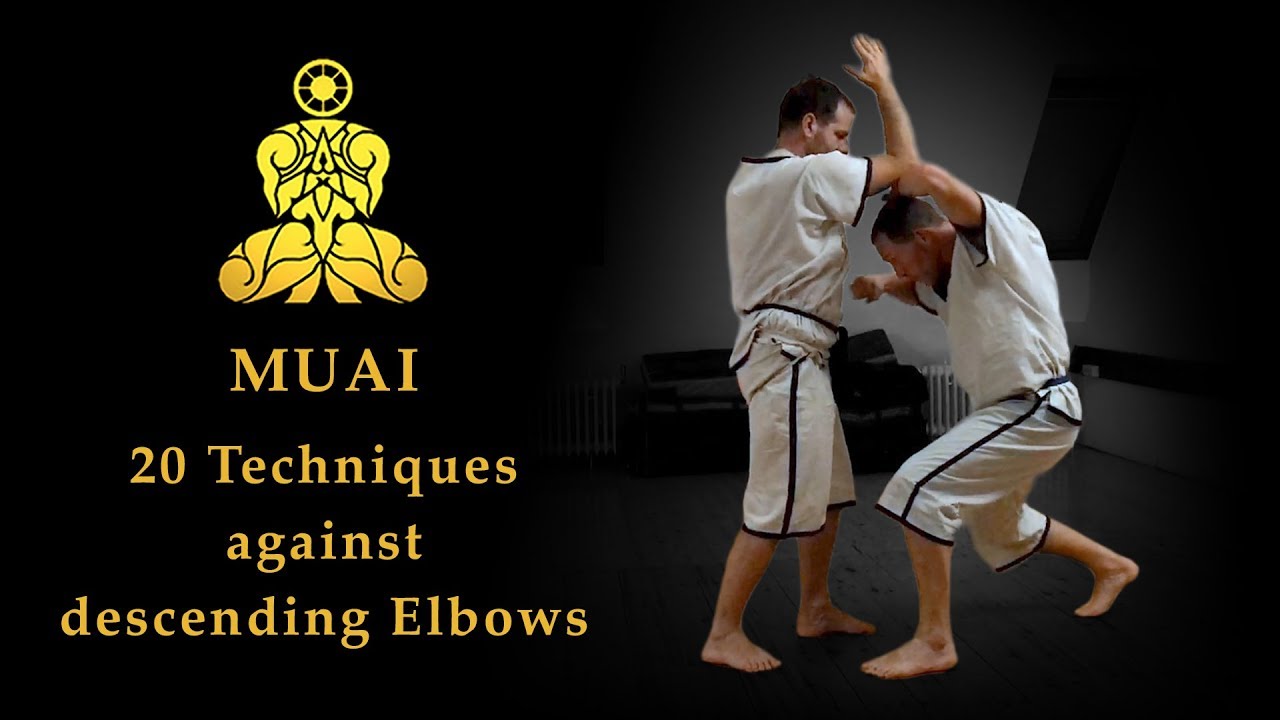802 Traditional Counter Techniques for Muay Thai, Muay Boran and More (free)
No matter if Muai, Muay Thai, Muay Boran, MMA or self-defense. You can never have enough good techniques. MUAI students learn at least 200 traditional school techniques as part of the green belt learning level, which are then individually varied, combined and developed.
The resulting variety of techniques offers Pahuyuth students a solid foundation of fist, foot, elbow and knee techniques from which they can derive a variety of suitable counter-techniques for pretty much every conceivable and unthinkable combat situation.
We have preserved a few hundred of these counter-techniques against simple basic techniques (mother techniques, Mae Mai) on our Youtube channel and make them available to everyone free of charge further down in this blog post.
If you want you can subscribe to our Youtube channel here.
Content
Practice recommendations
Excursus: The Systematic Nomenclature of Pahuyuth
Pahuyuth consists of seven different disciplines (MUAI, LING LOM, MEED, MAI SAWK, DAAB , GRABONG, SABAI) that can be learned individually and seamlessly combined. The number of traditional fighting techniques for beginners (green belt) is more than 1,000 individual techniques across all disciplines.
For teaching purposes, the disciplines and techniques of Pahuyuth were structured and provided with their own systematic nomenclature. This allows an exact assignment of the techniques according to Pahuyuth discipline, type of technique and technique.
For example, the abbreviation LS-01-04 stands for “Lugsidt (teaching contents of the yellow belt stage), first technical chapter, (Physical Knowledge) technique number four”, i.e. a simple straight punch. The technique MU-04-05 on the other hand refers to “MUAI (Discipline of Pahuyuth), Technical Page 04 (Basic Techniques), Technique Number Five” and represents a classic Roundhouse Kick.
The systematic nomenclature of pahuyuth is used in the context of Pahuyuth training, as well as in the Pahuyuth Compendium.
Pahuyuth has an independent systematic nomenclature with which combat techniques are structured for teaching purposes.
Pahuyuth beginners (yellow belt) learn 45 basic techniques from the fields Physical Knowledge (LS-01), Defense Knowledge (LS-02) and Safety Knowledge (LS-03).
Excursus: Why no fantasy, trivial or Thai names?
The use of fantasy or trivial names for combat techniques regularly leads to misunderstandings in the practical learning process. Moreover, from a historical point of view, it is not really to be classified as “traditional”.
Supposedly traditional terms such as “Hanuman presents the ring” (Hanuman Tawai Waen) refer, for example, to the Rammakiern Saga. However, this poem wasn’t common in Siam until the 19th century. A.D., which was after the retreat of the ancient Pahuyuth Free-Warriors. The use of such fantasy names can therefore be taken as an indication that a fighting style is less than 200 years old and therefore does not belong to the traditional fighting styles.
As a rule of thumb, whenever imaginative technical names such as “The Crocodile Strikes with the Tail” (Jarake Fad Hang), “The Snake Naka Strikes with the Tail” (Naka Bid Hang) or “Hanuman Breaks the Blockade” (Hanuman Hag Dahn) are in play, it is a modern development or an imitation.
The same applies to the use of Thai language terms. Pahuyuth is much older than the Thai language and has always been practiced by members of different languages and ethnicities. With the exception of the term “Pahuyuth” (originally from Sanskrit), the names of the disciplines and some common anatomical terms, the use of foreign words is therefore largely avoided.
802 traditional MUAI counter techniques
3 fist techniques AND 268 fist counters
Fist techniques are divided into “straight”, “curved” and “mixed”.
- Straight: A straight fist moves linearly from A to B.
- Curve: A curved fist moves from A to B in a circular motion.
- Mixed: A mixed fist is a hybrid form of straight and curved or curved and straight.
MUAI students of the beginner level (green belt) learn at least 42 fist techniques.
Similar techniques in Muay Thai (examples): Punch (Chock), Jab (Mat Jab, Mat Throng, Chock Num), Straight Strike (Mat Throng, Mat Throng Chock Tam), Upward hook (Mat Ngad, Mat Seri), Hook (Mat Hook, Mat Weang Sun).
Counter-techniques
Counter-techniques
Counter-techniques
3 foot techniques and 220 foot counters
Kicks are divided into “ascending”, “parallel” and “descending”. The decisive factor here is the motion vector when impacting in the target.
- Ascending: An ascending kick hits in the upward movement.
- Parallel: A parallel kick hits in the horizontal motion.
- Descending: A descending kick hits in the downward movement.
MUAI students of the beginner level (green belt) learn at least 42 foot techniques.
Similar techniques in Muay Thai (examples): Kick (Te), Front Kick or Push-Kick (Teep, Teep Ruk, Teep Trong, Teep Khang, Teep Sakad, Teep Glap Lang, Teep Yan Lang, Teep Robgaun), Round Kick to leg (Te Ka, Te Tad Lang), Round Kick to Body (Te Lam Toa, Te Tad Glang), High Round Kick (Te Sung, Karn Koa), Half-Knee-Half-Shin Kick (Te Khrung Khang Khrung Khow), Kick from above (Te Kook, Na Ca Bid Hang).
Counter-techniques
Counter-techniques
Descending Kick
Descending Kick (LS-01-09)
Counter-techniques
3 elbow techniques and 119 elbow counters
Elbow techniques are divided into “ascending”, “parallel” and “descending”. The decisive factor here is the motion vector when impacting in the target.
Ascending: An ascending elbow hits in the upward movement.
Parallel: A parallel elbow hits in the horizontal motion.
Descending: A descending elbow hits in the downward movement.
MUAI students of the beginner level (green belt) learn at least 42 elbow techniques.
Similar techniques in Muay Thai (examples): Elbow (Sok), Downward elbow (Sok Tee), Cutting elbow (Sok Tad), Upward elbow (Sok Ngad), thrust with elbow tip (Sok Pung), elbow backwards (Sok Kratung), backward elbow (Sok Glab), elbow from above (Sok Sub).
Counter-techniques
3 knee techniques and 118 knee counters
The knee techniques of the MUAI are also classified according to “ascending”, “parallel” and “descending”. For subsequent technical series, however, the classification according to stability principles was chosen. In Pahuyuth, three types of stability principles for knee techniques are known: counter-traction, counter-rotation, and balance.
- Counter-traction: In the case of knees with counter-traction, the arms pull the target linearly into the knee thrust or knee strike.
- Counterrotation: Counter-rotation knees provide stability through a circular motion around an axis.
- Balance: Balancing knees use balancing movements of one’s own body to create a stable stand.
MUAI students of the beginner level (green belt) learn at least 42 knee techniques.
Similar techniques in Muay Thai (examples): Knee (Khow), Straight Knee (Khow Trong), Round Knee (Khow Khong), Squeezing Knee (Khow Kod), Flying Knee (Khow Loy), Small Knee (Khow Noi),
Counter-techniques
Counter-techniques
Counter-techniques
77 BONUS TECHNIQUES
In the Youtube comments we were asked if we could also show a few counter-techniques for three specific techniques.
We were happy to comply with this request and have published three more videos on these techniques.
13+8 techniques against Spinning Back Upward Elbow Strikes
12+15 techniques against Reverse Lead Up Elbow Strikes
22+7 techniques against Reverse Rear Upward Elbow Strikes
Learn MUAI – Trial Training
- Are you interested in topics such as Muay Thai, Thaiboxing, Muay Boran, Bokator, Pradal Serey, Letwei, Muay Lao, Muay Korat, Muay Lerdrit, Muay Chaiya, Muay Kaad Chuek, Combat Muay Boran, Muay Lopburi, Muay Lumpinee, Muay Mat, Muay Tae, Muay Sok, Muay Khao, Muay Thasao, Muay Femur, Muay Rayong, Muay Rajadamnern, Muay Douy, Muay Lumpinee, or Southeast Asian stand-up fighting in general?
- You are already familiar with one or more of the above-mentioned fighting styles and search for a way to further your education?
- You are an absolute beginner and want to learn to defend yourself against one or more opponents without sports-related restrictions or competition rules with bare fists, feet, elbows and knees? Including throwing techniques, ground combat and grip techniques? On concrete and asphalt? Maybe even with or against weapons?
You want to learn MUAI but don’t know where to start yet?
No problem! With the following steps, you can now immediately start your training and lay the foundation for your MUAI training – 100% free, without obligation and anonymous. Just train when and where you want, without registration, without devices and as long and as often as you want. Just go for it!
Step 1: Your first workout

The 30 Exercises are our standard fitness training for beginners. Everyone has to get through this. We share this approximately one-hour workout free of charge and without obligation on our website.
Recommendation: Take a look at the exercises on our tutorial page and try them out with the help of the instructions.
Please note: In order to be allowed to train with us, it is not necessary to be able to perform the 30 exercises perfectly in advance. It is sufficient if you know them.
Step 2: Your first techniques

In our instructional video from 1984, the first 15 of a total of 45 basic techniques for beginners are taught. We also share this one-hour tutorial for free on our website.
Recommendation: Watch the 1984 instructional video and learn your first fighting techniques. For this you need neither previous knowledge nor a special talent. Just give it a try.
Please note: In order to be allowed to train with us, it is not necessary to master all these techniques in advance. It is sufficient if you know them.
Schritt 3: Beginne ein "Niemand" zu werden

Pahuyuth is a method of close combat that was developed and used by paramilitary special forces, mercenaries and commando units (aka “No one”).
Following the ancient traditions, we value data protection and privacy. This means, among other things, that we do not use real names as part of our training, but so-called Warrior-Names.
Your brain teaser task: Start becoming a “no one” by giving yourself a pseudonym or at least thinking about who or what you would like to be for yourself or others.
Step 4: Sign Up
If you enjoyed steps one to three and want more of of this in your life, then sign up with your self-chosen Warrior-Name (see step 3) either at our trial training in Berlin (up to 3x free of charge) or for our worldwide online training (available in German and English). Details on the respective training formats can be found on the topic pages linked below.
Pro Tip: If you have any questions regarding the steps above, please email us at [email protected]








